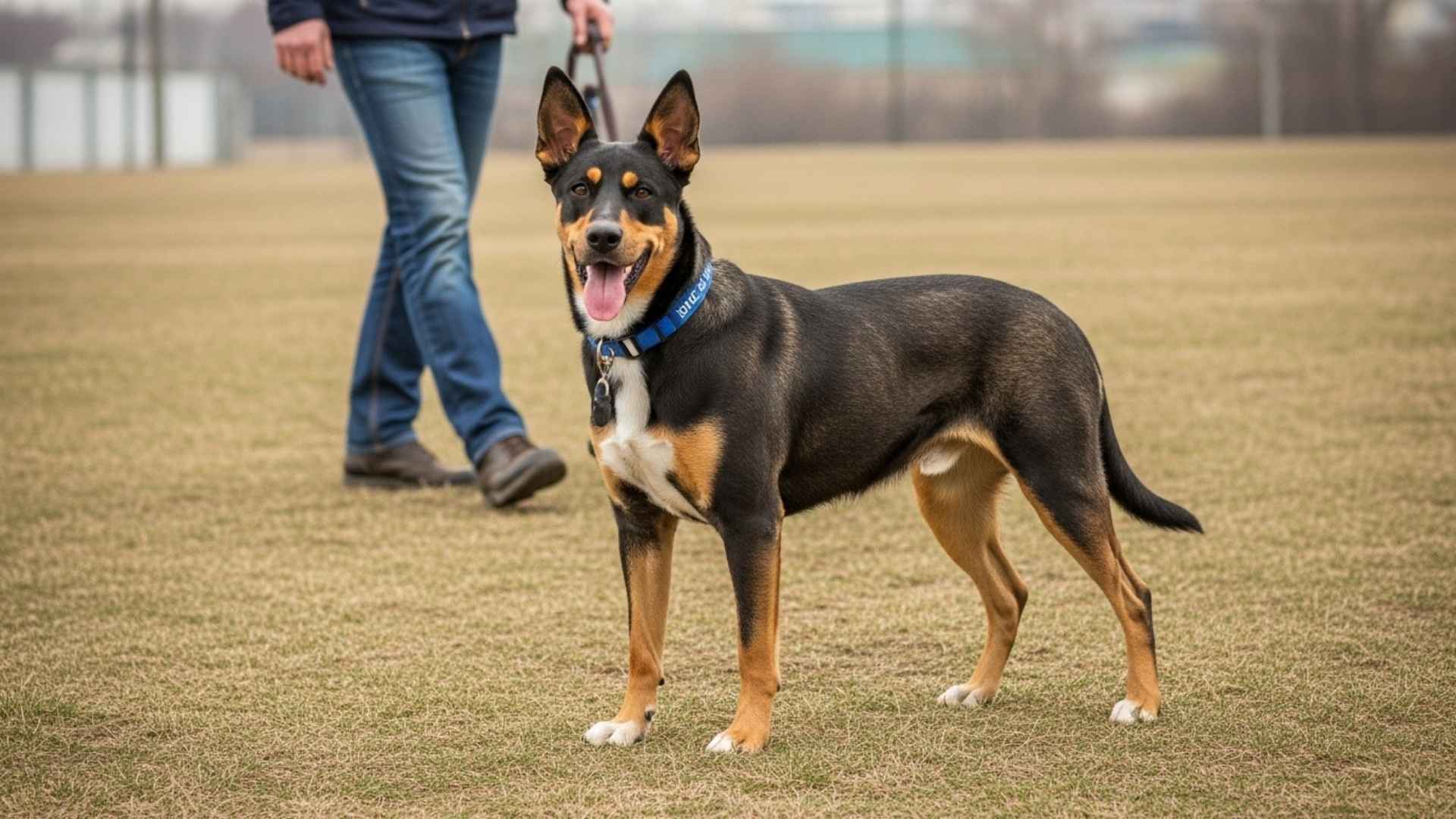Ever wondered why some of the best guard dogs are also the hardest to care for?
Behind every loyal protector stands an owner who gives hours of love, patience, and training each day. Owning one of these high-maintenance guard dog breeds isn’t just about having a pet—it’s about building trust with a guardian who would do anything to protect their family.
According to the American Kennel Club (AKC), mental stimulation and early socialization are just as important as physical activity for a balanced, happy dog. These dogs don’t just need space—they need purpose, guidance, and a bond that grows stronger every day.
And even the simplest dogs take at least an hour a day for feeding, cleanup, and exercise—but for high-energy, large dogs, that time easily doubles.
Yes, these breeds require effort. But what they give in return—unshakable loyalty, courage, and love—makes every minute worth it.
If you’ve ever dreamed of a faithful companion who’ll stand guard no matter the risk, these ten excellent guard dog breeds will capture your heart.
High-Maintenance Guard Dog Breeds Worth Considering
Here we go, one by one.
1. Puli
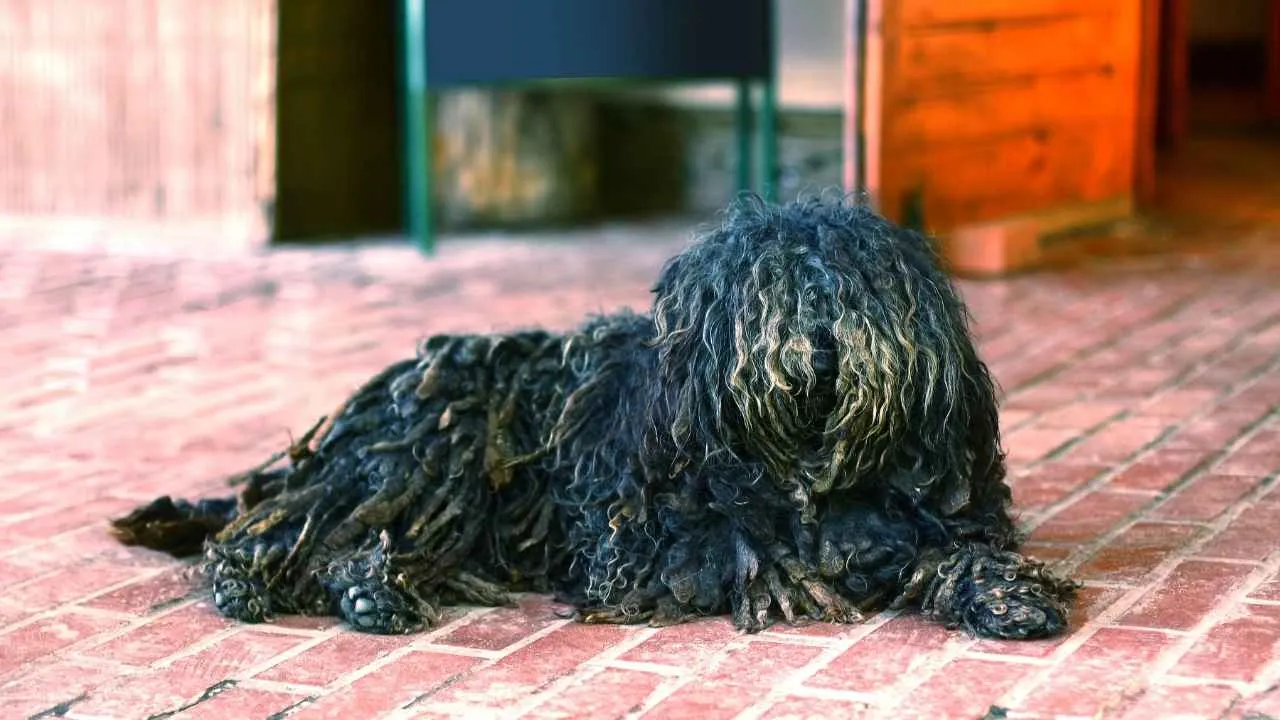
Ever seen a dog that looks like a living mop but guards like a lion?
Meet the Puli, a fluffy hero wrapped in cords of courage.
Beneath that long, corded fur lies a sharp mind and fearless heart. The Puli may look like it belongs in a grooming salon, but this dog breed was actually bred to protect sheep and watch over flocks. Known for its incredible agility and quick thinking, it makes an alert and devoted companion in family life.
However, its famous thick coat demands serious commitment—expect frequent brushing, bathing, and drying sessions to prevent tangles and dirt buildup. Their coats naturally form cords that require steady care to stay clean and healthy.
This small but mighty breed thrives with consistent training and lots of interaction. Its herding roots mean it’s full of energy and curiosity, so giving it tasks and mental challenges keeps it happy and focused.
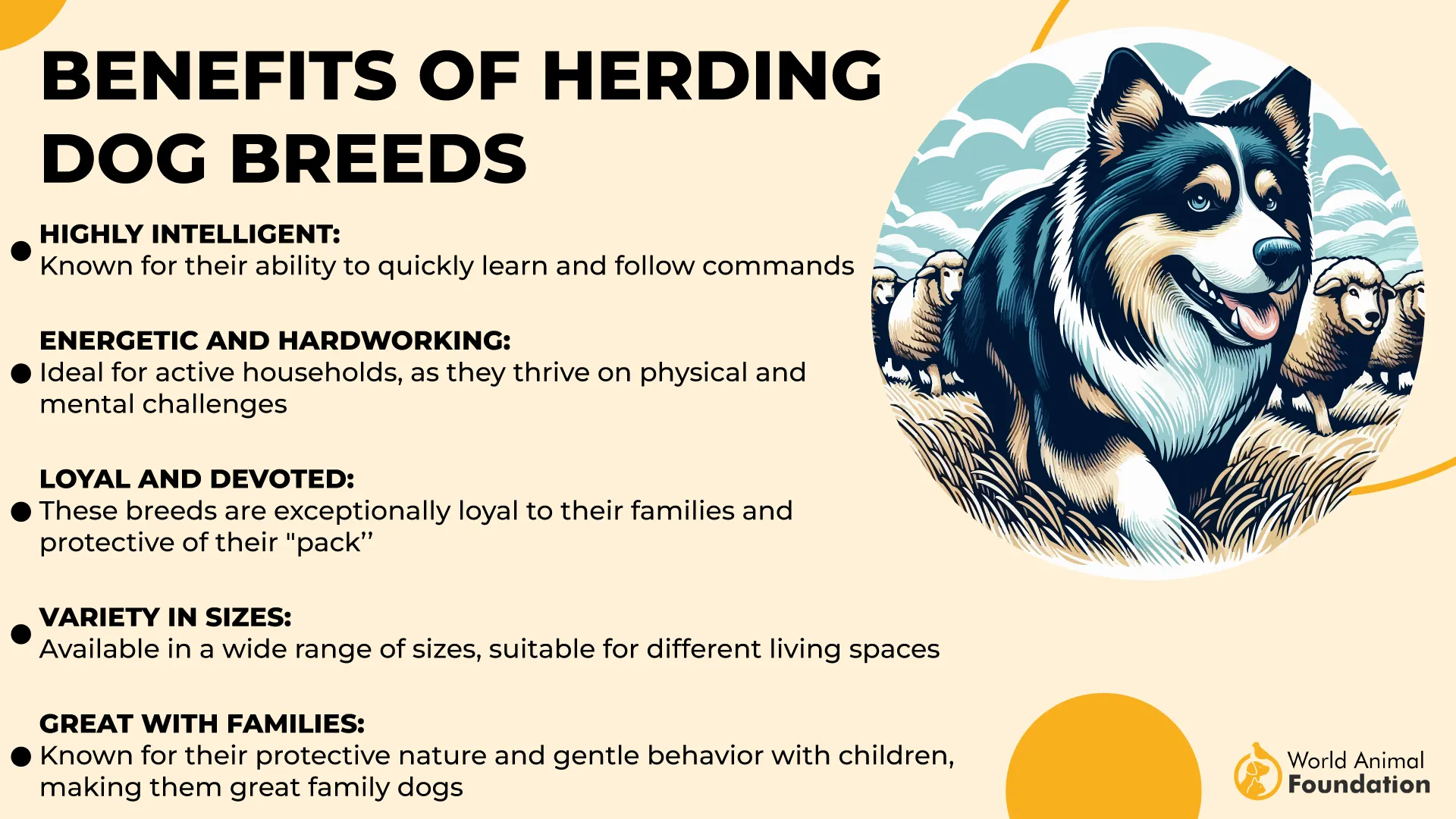
Though compact, the Puli is one of the most popular guard dog breeds, always alert to changes around the house or yard. According to Hill’s Pet, Pulik (the plural of Puli) form close bonds with their owners and excel when treated with patience and positive reinforcement.
Fun Fact:
The Puli’s coat is so weather-resistant that Hungarian shepherds once said their dogs could “sleep through a storm without getting wet!”
2. Spanish Water Dog
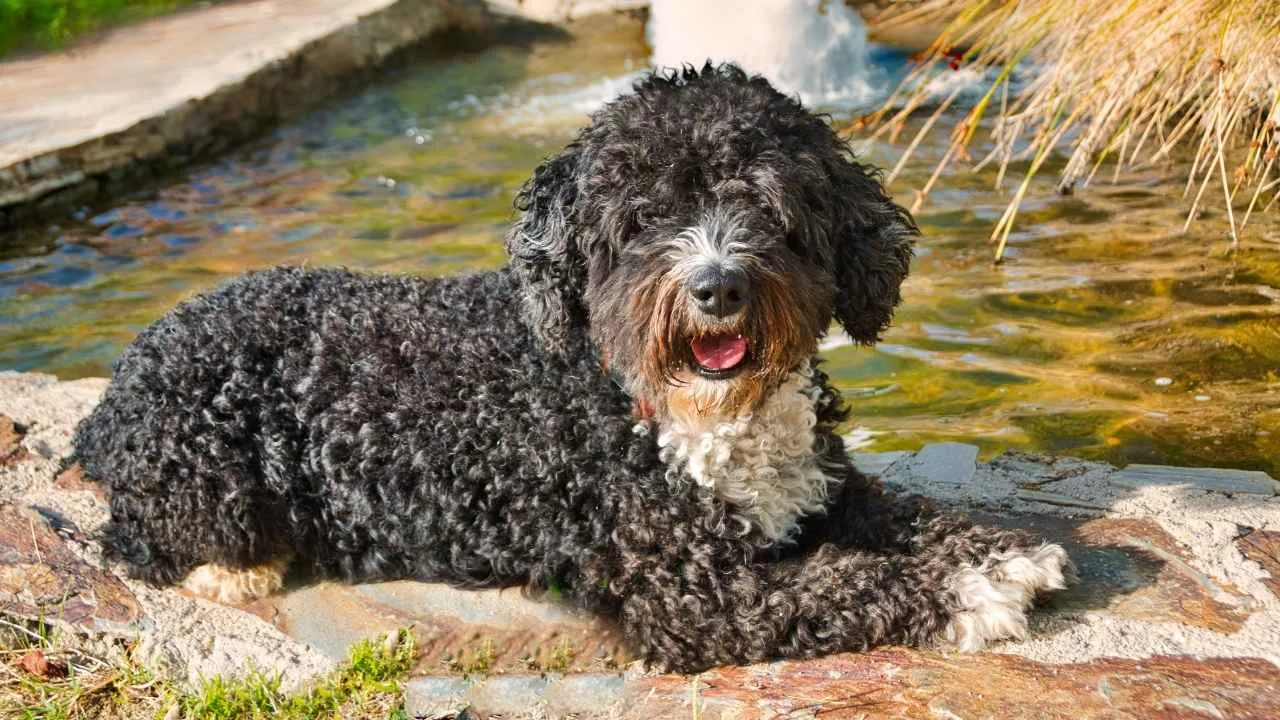
Think curls mean cuddles?
With the Spanish Water Dog, those curls come with courage and confidence to match!
The Spanish Water Dog is an athletic, hardworking companion that thrives when it has a job to do. Bred for herding and water retrieval, this clever dog breed is happiest when it’s active and engaged. Its tight, curly coat isn’t just for looks—it protects against harsh weather and rough terrain.
However, this beauty demands care; the coat should never be brushed, but trimmed occasionally to maintain its natural texture. Due to its high energy, this breed is well-suited for active owners who can provide regular exercise and purposeful training sessions.
Social and loyal, the Spanish Water Dog forms deep bonds with its family members and stays alert around other animals or strangers, making it one of the best guard dog choices for energetic households.
Proper coat care and early socialization are key to keeping this breed confident and happy. Their intelligence shines when given structure and proper training, and they return every ounce of effort with devotion and joy.
Fun Fact:
The Spanish Water Dog’s coat is so unique that it naturally cords—no brushing required! Its rustic curls are a proud symbol of its hard-working heritage.
3. Black Russian Terrier
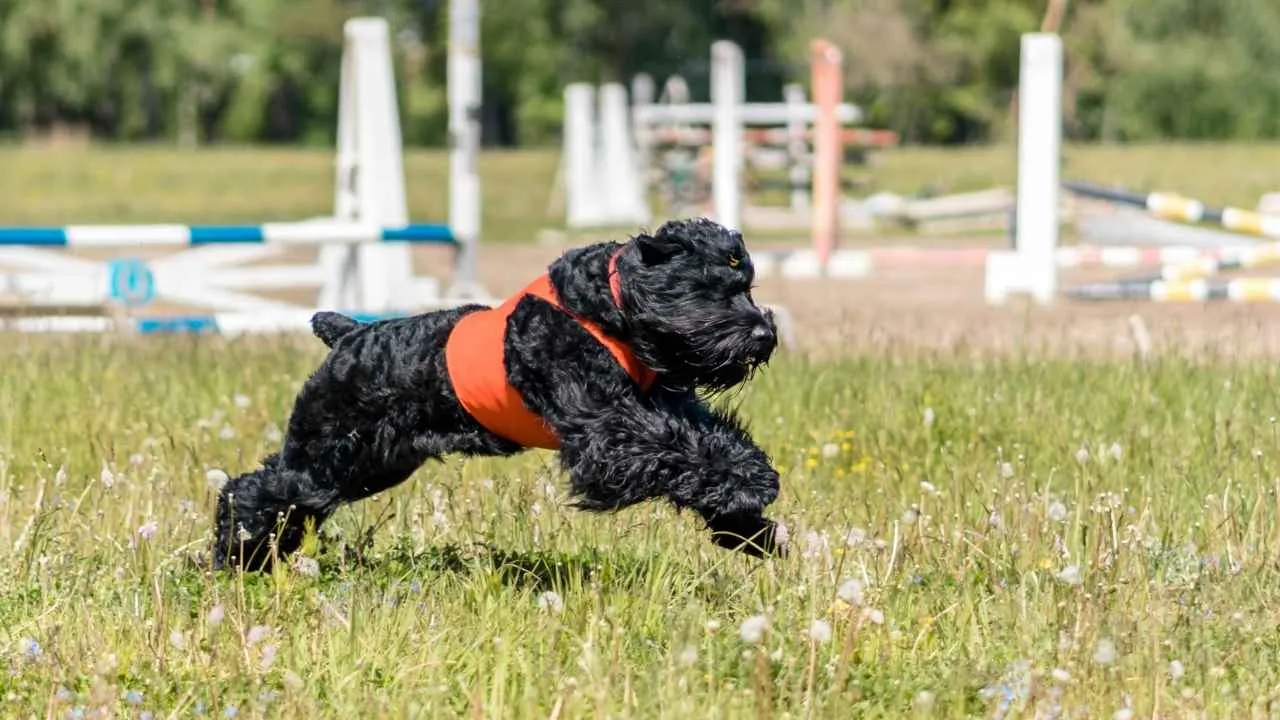
What do you get when you combine bulk, brains, and a guardian’s heart?
The Black Russian Terrier—a protector who thinks twice and acts with purpose.
Here’s the deal: The Black Russian Terrier is large, courageous, and born to protect. Initially developed for police and military work, this natural guard dog breed blends strength with sharp smarts. They are incredibly loyal to their family members, and once they trust you, they’ll stand between you and danger without hesitation.
But this breed isn’t for the faint of heart. Their dense, double coat requires heavy grooming—professional trims every 6–8 weeks, and brushing two to three times a week, especially in problem areas like the face, legs, and undercoat.
Training a Black Russian Terrier well means being consistent and firm. These dogs are intelligent and confident. They understand commands quickly, but also question things if they sense weakness or confusion.
Early socialization is essential; without it, they may become reserved or overly cautious with strangers. Family life with a Black Russian Terrier is rich—with love, respect, and sometimes a challenge.
Fun Fact:
The breed’s coat is naturally double-layered—one thick soft undercoat and one coarser guard layer. That’s why their face grows a beard and mustache, and why grooming isn’t optional—it’s part of what gives a Black Russian Terrier its “look.”
4. Bouvier des Flandres
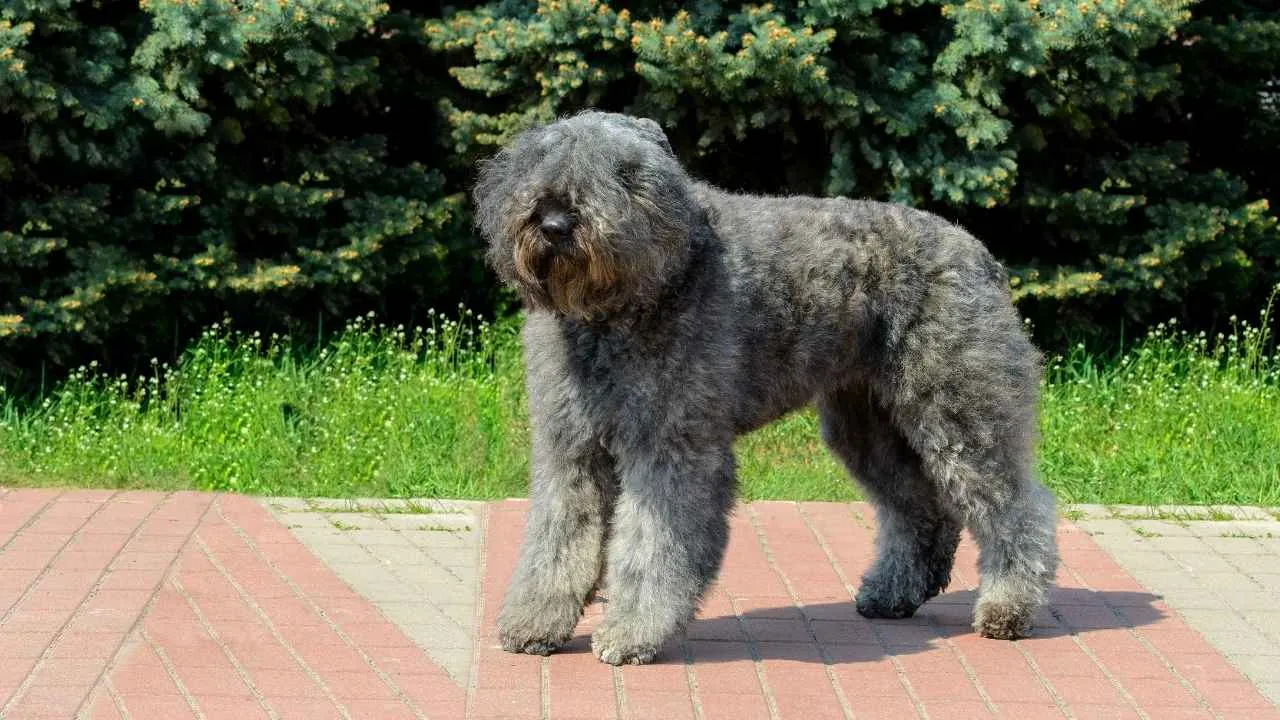
Ever met a “dirty beard” that rules your heart and your yard?
That’s the Bouvier des Flandres for you—ugly-cute, tough, and fiercely devoted.
Strong and steady, the Bouvier des Flandres is a large, muscular dog with deep roots in farm work. It was originally bred in Belgium to drive cattle, pull carts, and guard property. Today, it brings that same protective spirit into family life.
Bouviers are independent yet affectionate, and they thrive when they have a job or a purpose. Their shaggy double coat is rugged, but it demands regular grooming to avoid mats and keep skin healthy.
Because Bouviers are smart and self-reliant, they need proper training and consistent socialization from a young age. Without structure, their protective nature can grow into over-guarding or suspicion of strangers.
Bouviers excel in agility, obedience, and carting, but only when given direction and challenge. In a loving home, a Bouvier becomes both a gentle giant and a silent protector.
Fun Fact:
The name Bouvier des Flandres literally means “cow herder of Flanders” — a tribute to its original farm life role in Belgium.
5. Briard
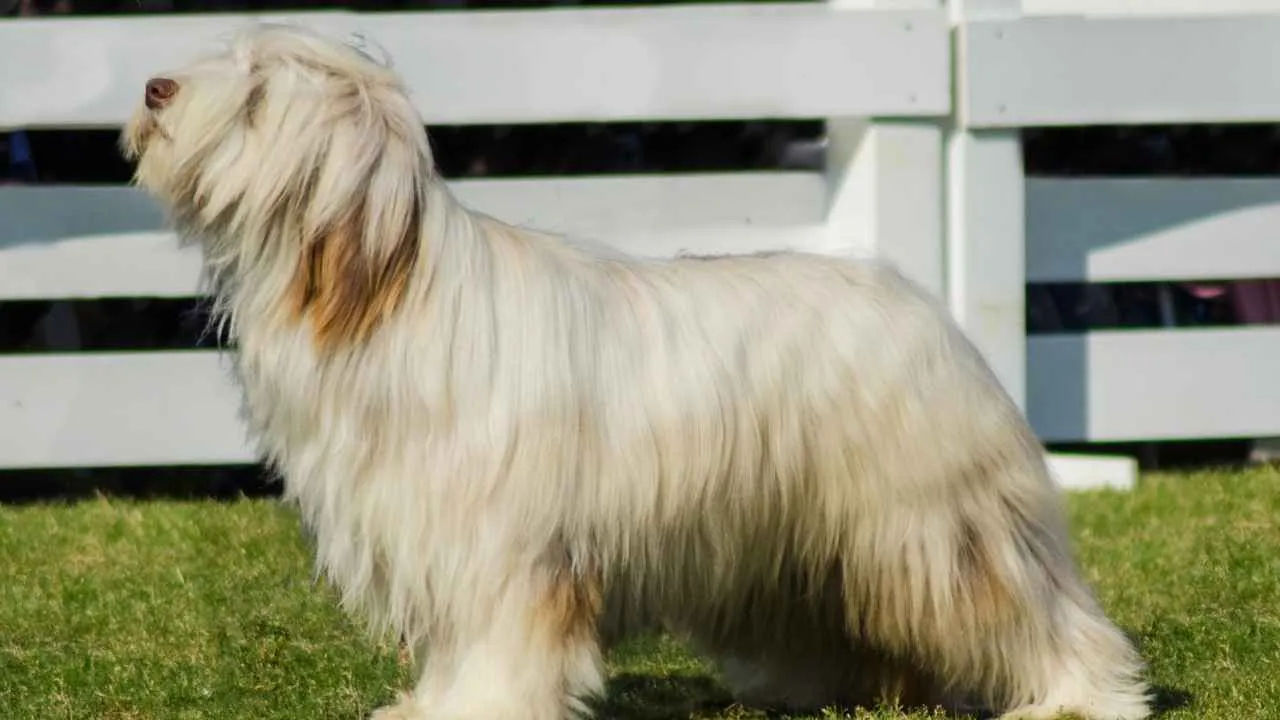
What dog can herd sheep, guard your home, and still cuddle on the couch?
The Briard — a “heart wrapped in fur” with strong protective instincts.
The Briard is a powerful, intelligent dog breed that was originally bred to both guard and herd sheep in France. Its movements are described as quicksilver—able to make sudden turns, leaps, and bursts of speed. It needs plenty of regular exercise and mental tasks to prevent boredom.
The coat is long, slightly wavy, and dense. To keep it free of mats, you’ll need to commit at least two hours a week to brushing and combing—and even more if your Briard spends time outdoors. Because the Briard is smart and independent, it responds best to consistent training and positive methods.
Early socialization is key—without it, this breed can become overly cautious or even aggressive toward strangers. Still, with structure and love, a Briard becomes a loyal, watchful guardian for its family members.
Fun Fact:
Thomas Jefferson imported Briards to guard his flocks at Monticello, and during the World Wars, Briards served as sentry and messenger dogs in the French military.
6. Giant Schnauzer
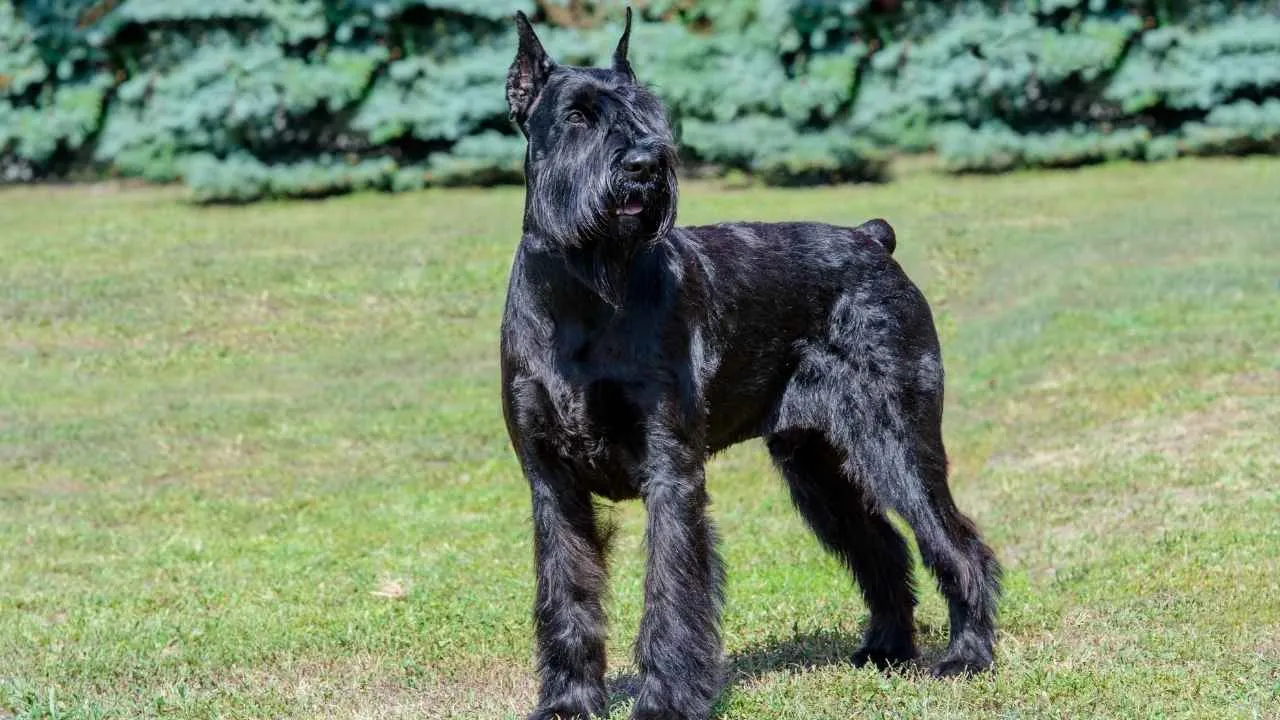
Want a dog that stands guard like a fortress — but still thinks for itself?
Meet the Giant Schnauzer.
The Giant Schnauzer is a powerful, alert breed with deep roots in protection and farm work. Giants are intelligent, alert, loyal, and highly trainable—traits that make them well-suited as guard dogs.
Thanks to its strong, wiry double coat, this dog breed can handle harsh weather, but that coat also demands regular grooming and maintenance. This breed thrives when challenged — mentally and physically. Daily exercise and mental stimulation are musts to prevent boredom or destructive behavior.
Giants may be cautious around strangers and can display territorial tendencies, so proper training and early socialization are essential to guiding their natural guarding instincts.
With consistent structure and affection, a Giant Schnauzer becomes a noble protector and loyal family companion.
Fun Fact:
The Giant Schnauzer is the largest of the schnauzer types — and when aroused, it becomes a “commanding figure.”
7. Poodle (Standard)
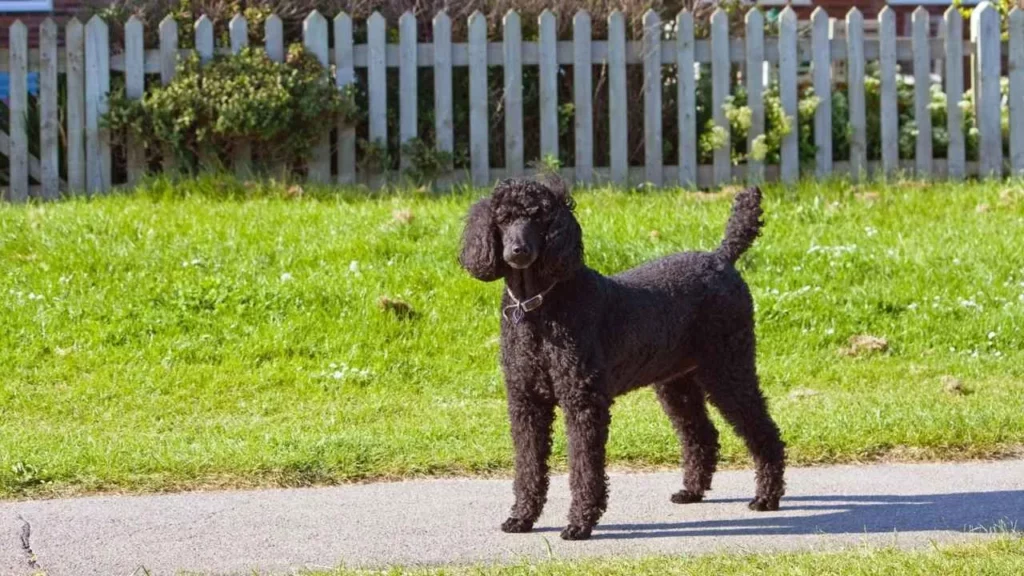
Who says guard dogs can’t look elegant? The Standard Poodle might surprise you—trimmed hairstyle and all, it’s a guard dog in shiny fur!
The Standard Poodle is more than fancy fur. This dog breed is sharp, alert, and fiercely loyal to its family. With strong protective instincts, it notices things others might miss—like sounds, motions, or strangers at the door.
Poodles are “extremely alert” and quick to learn, making them well-suited to guarding duties when trained properly. Still, elegance comes with effort. The Standard Poodle’s curly, dense coat needs frequent grooming, frequent trims, and regular brushing to look good and stay clean.
Without that care, mats and skin issues pop up fast. The same source says their coat demands steady maintenance.
Fun Fact:
The Standard Poodle ranks among the smartest dog breeds! They often learn new commands quickly—and can even assess situations, deciding when to act as guard and when to just be a calm companion.
8. Old English Sheepdog
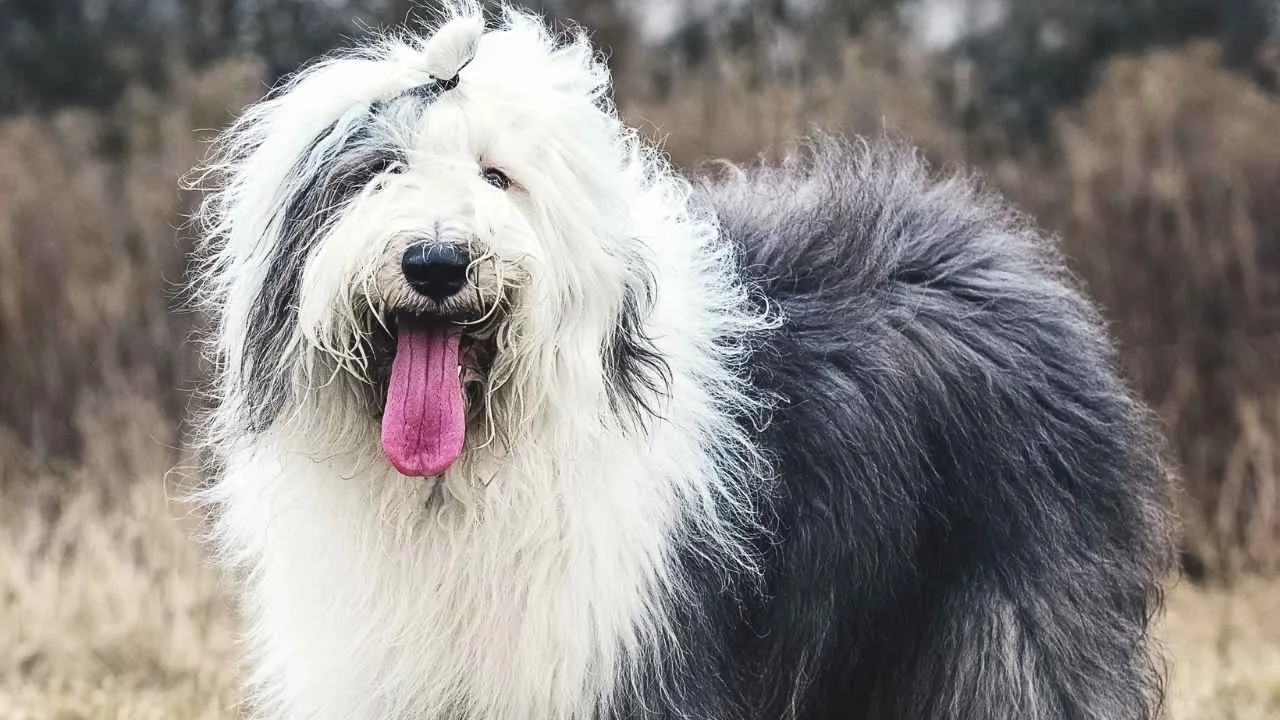
What do you get when a teddy bear grows up big and thinks it must guard the house? That’s your Old English Sheepdog — soft, fluffy, and surprisingly strong.
The Old English Sheepdog is famous for its shaggy coat and gentle heart. It looks like a bundle of fur, but inside lives a loyal protector. This breed moves with a bear-like gait and enjoys a good romp or long walk.
They make amazing family companions, especially when treated kindly and included in daily life. Because they are large, calm, and affectionate, they are often seen as “gentle giants.” Still, don’t let their softness fool you — caring for one takes work.
Their thick, profuse coat needs brushing often to avoid mats. Without regular grooming, the fur can tangle, trap dirt, and even lead to skin problems.
Also, their size and energy mean they benefit from early training — showing them what’s okay and what’s not from a young age helps them become balanced protectors, not anxious or over-guarding dogs.
Fun Fact:
Despite their shaggy hair covering their eyes, Old English Sheepdogs can see pretty well — their hair may part in a natural way around their eyes, which helps them stay alert to sounds, movement, or strangers.
9. Komondor
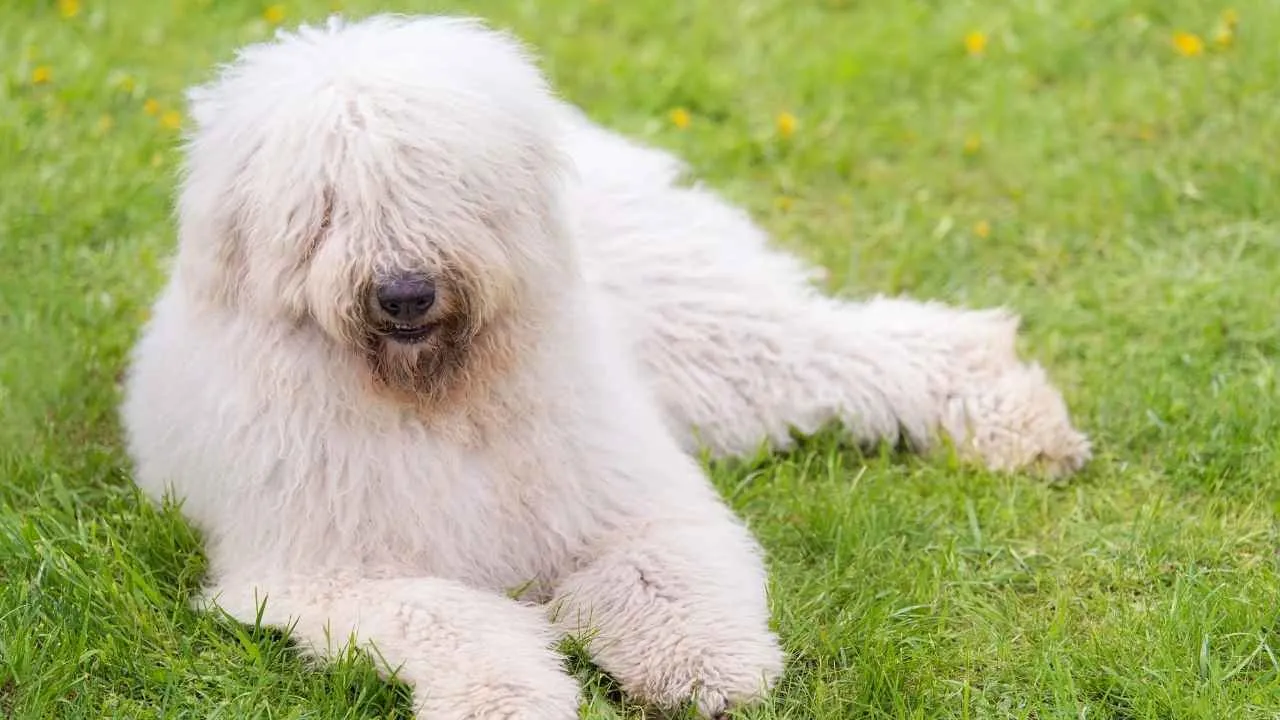
Imagine a giant white mop roaming the yard, quietly guarding every corner — that’s the Komondor, a protector wrapped in a corded armor.
The Komondor is a large, muscular dog with deep roots as a flock guardian. Brought to Hungary centuries ago, this breed was originally bred to guard livestock and stand watch against predators.
Its coat is heavy, white, and corded — looking like thick ropes — and that coat helps it blend in with sheep and protect itself from harsh weather. But that beauty comes at a cost.
That tangled, corded coat needs weekly maintenance to stay clean and healthy: cords must be separated, washed, and dried properly — otherwise they can trap dirt and cause skin issues. Training a Komondor isn’t simple. These dogs are independent thinkers.
They guard their family fiercely, are wary around strangers, and need proper training and early socialization to ensure they know boundaries. With the right owner, they become loyal protectors — but without that, their natural guarding instincts may lead to issues.
Fun Fact:
The word “Komondor” comes from “Cuman-dor,” meaning “Cuman dog,” after the nomadic Cumans. Also, the dense coat acts like an insulating armor. It protects against bites and cold, yet still lets air flow through so the dog can stay cool.
10. Leonberger
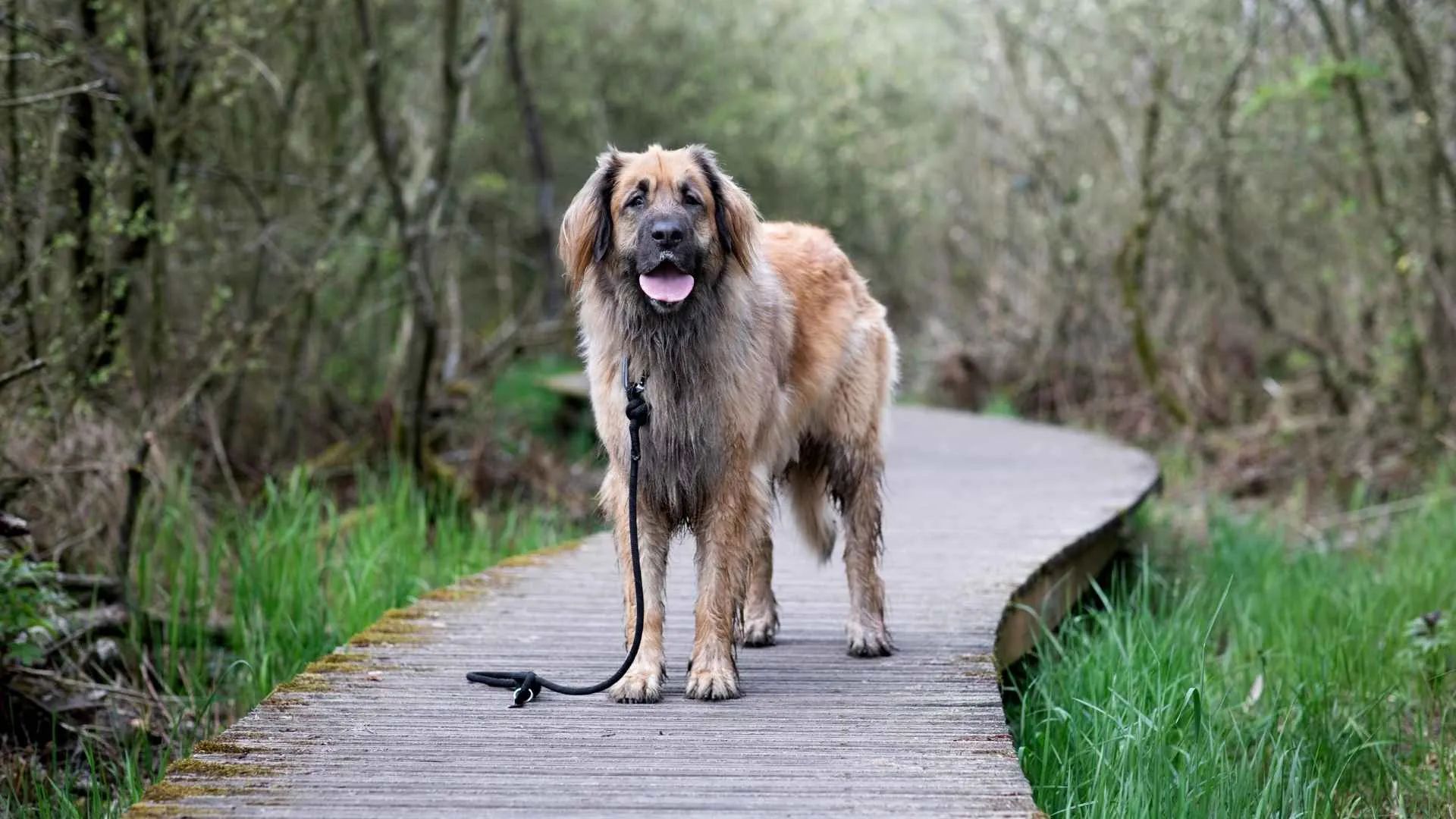
Ever watched a giant teddy bear guard your home?
That’s the Leonberger in action — majestic size, gentle heart, and a protector’s spirit.
The Leonberger is a true giant breed, calm yet alert, perfect for homes wanting a combination of strength and serenity. Leonbergers are lush-coated, patient, and deeply devoted to their families. This dog thrives in an environment where it is part of family life rather than kept isolated.
As Orvis describes, despite their size, Leonbergers are playful, affectionate, and often goofy in day-to-day life — but they also retain protective instincts that make them excellent guardians. That said, owning a Leonberger isn’t low maintenance by any stretch.
Their thick double coat sheds heavily, especially in seasonal changes. Daily brushing and regular grooming are essential to prevent mats and tangles. Plus, young Leos need proper training and early socialization so they don’t grow into overprotective or shy adults.
Exercise is also key — even though they can be calm indoors, this breed has energy and stamina that demand attention.
Fun Fact:
Leonbergers were intentionally bred in the town of Leonberg, Germany, to resemble the lion on the town’s crest — hence their majestic mane and lion-like presence.
Conclusion
Owning one of these high-maintenance guard dog breeds isn’t for everyone, but for those ready to commit, the rewards are huge. Each of these loyal protectors needs proper training, steady grooming, and plenty of love to thrive. Behind the strength of every guard dog breed lies a heart that lives for its family’s safety and happiness. When cared for with patience and respect, they grow into not just defenders, but lifelong companions.
If you decide to bring one home, always choose responsible breeders or trusted rescues that focus on health and temperament. Because when a visitor arrives, these dogs don’t just bark — they stand between you and danger, out of pure, unwavering love.


